|
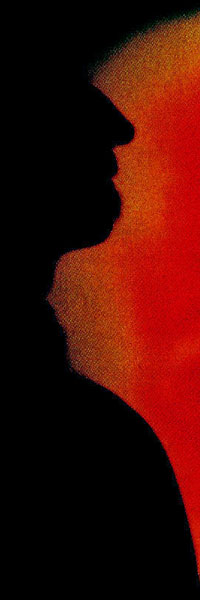
|
paolo monti
=
art
+ science |
|
|

SAVE THE DATE:
Monday 28
November 2011
Sala Odeion - Museum of Classical Art
from 9,30 a.m. – 19,30
p.m
Faculty of Letters &
Philosophy La
Sapienza University of Rome- Piazzale Aldo Moro, 5
PRESS RELEASE
| XI 2011
Paolo Monti
+ G.A.U.S.S.
Blazing Departure. Art infraseen from above
Art and science meet in the orbiting gallery of
Paolo Monti
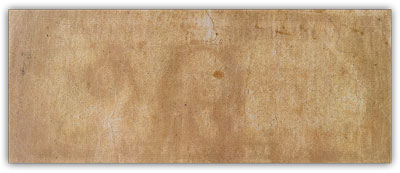
During the European Week of
Scientific Culture 2011, promoted by the
Italian Ministry of Education,
University
and Research, on Monday 28 November 2011 in the Odeion Hall of the
Museum of Classical Art at the
Sapienza University of Rome, a day of study will be held dedicated to the opera of Paolo Monti,
Infra-TazebAu s'pace
Information in revolution. C.G.B. an epistemologically propelled
satellite. Shroud {Sindone}
R.F.I.D. 21’37”.
His work, carried out for the microsatellite
Edusat-G.A.U.S.S. (Group
Astro-dynamics, University of Studies Sapienza) and launched into orbit this past
17 August from the Space Centre at Yasny in Russia,
consists of a blank whitened one dollar banknote, defaced of its symbols and
signed by all the members of the Gauss team and the artist himself.
Edusat-Gauss has been elected by Monti as his personal gallery, and
first orbiting gallery.
During the course of the day a video-projection will illustrate the orbit of the
satellite-gallery in transit across the skies of Rome, identified by the
ground station SPIV (San Pietro in Vincoli) located in the GAUSS laboratory in
the School of Aerospace Engineering.
Art, science, epistemology and economy are the pivots on which Paolo
Monti’s art rotates and, their interdisciplinary approach will be the themes
discussed during the convention.
The Infra-TazebAu s'pace project is
promoted by the Polo Museale Sapienza and by MUSIS - Museum of Science and
Scientific Information in Rome.
The
TazebAu Project
Since 1996 MUSIS - Multipolar Museum of Science and
Scientific Information has activated an
interdisciplinary dialogue with Monti in various fields
of knowledge and, in particular, between Art and
Science, with his participation in numerous editions of
the Italian & European Week of Scientific Culture. Since
the 80s, in fact, this artist has been working in the
sphere of visual arts through personal research taken to
the limit between Art and Science, producing work in
which the observer, through active involvement, becomes
a participant capable of modifying it.
Also in this latest piece of work Monti wanted to put
himself in an interdisciplinary ambit, ideating the
opera TazebAu (*Au stands for aurum/gold); used as a
propaganda instrument or as a political accusation by
the Chinese students during the Cultural Revolution. Tazebao was originally a hand- written declaration,
whose meaning has become, through expansion, that of a
critical statement.
The first phase of the project took place in 2005 when
Monti put his TazebAu in the hands of a group of
motorcyclists on the Marco Polo Motoraid 2005, which
left from Venice, 1st August and arrived in Peking on
18th September, and followed the route taken by Marco
Polo. Paying homage to the Venetian Market to which we,
in the Western world, owe the introduction of paper
money, Monti conceived TazebAu like a traveller’s
journal, made up of thirteen blank banknotes: one for
each country travelled through. Whitened banknotes,
stripped, scraped clean of their ink but intact in their
structure, onto which the members of the mission and the
artist placed their signatures.
At the end of the mission the banknotes were analysed by
means of different spectrograph systems: from infra-red
to ultra-violet, from electronic noses to investigation
using ultra-sound, even to molecular identification; an
undertaking of scientific research and symbolic of the
visible and non-visible traces left by the journey.
“Monti semi-cancelled the official seal, or altered it,
in order to cause tension with the signature during a
voyage that represents the circulation of other things
and, above all, gives it other values. Why, in his
work... – and this is his exceptional intelligence with
his scientificness –money is not denied as such, like a
symbol that makes sense as a carrier of a determined
represented value...and even continues to keep it
circulating, travelling” (Enrico Castelli Gattinara).
In 2006 the astronaut Paolo Nespoli signed the TazebAu
s’pace, inaugurating the space project. The artist
continued his research with the project EduSat, set in
motion in 2005, financed by the ASI, Italian Space
Agency, in collaboration with Gauss and with ImtSrl,
with the aim of involving secondary schools and getting
them to participate in the space programme.
To continue and extend the journey of his work, on 17th
August 2011, from the Space Centre at Yasny, in Russia,
the Gauss satellite was launched with the Infra-TazebAu
s’pace on board.
Conceived by Monti for the satellite, his work consists
of a dollar bill, chemically whitened until it becomes
almost illegible. As organiser Laura Rossi commented...”like a
palimpsest, a written page, erased and rewritten,
structured from nothing but a dollar stripped of its
symbols, it goes back to being a simple white sheet of
paper, a film onto which impress new expressions. The
image transmigrates into powder, leaving traces (...) on
the white banknotes like an imprint: cleansed support,
anonymous deposit in our memory. The material matter is
sublimed in a new state; the symbol dissolves into a
composite of relationships”. Also in that occasion his
work was signed by all of the members of Gauss and by
the said author before being sent into orbit on board
the satellite Edusat Guass, elected by the author as his
personal gallery and first orbiting gallery.
Eclectic and polyhedric artist, Paolo Monti has always
carried out interdisciplinary research with his art,
which extends from science to epistemology, from
philosophy to economics. His work on the banknotes has
enthused, among others, also economists like Nikolaus
K.A. Laufer, whose “personal and favourite
interpretation of the “Dollar-image” of the artist “is
the symbolic one of the downfall of the international,
post-war monetary system”, or it has also attracted the
attention of philosophers like Massimo Carboni: “Money
is not...hired as a form or means...but as material
conditioned by a process of decay: it does not dissolve
in the merchandise but, within itself...Money is not, by
nature, merchandise gifted with intrinsic value, its
quality exclusively consists in its quantity. Monti
materialises the abstract value, its phantom; turns the
process back-to-front which leads to the exclusion of
the goods bought with money...taking it back to its
original condition of material-object with an extreme,
residue of worth”.
Friedmann Malsch, director of the Contemporary Art
Museum in Lichtenstein, even though he noticed a
descendants from Duchamp and Beuys in Monti, he
recognised the originality of his creative path towards
a liberation of the abstract value of banknotes in which
the artist works, once freed from their material value:
“In many of his works you find overlapping in a direct
manner of the physical presence of the banknote and the
abstractness tending towards the absurdity of the
monetary value. (...) The artistic intervention re-
captures a “freedom” for the money, treating the
banknotes through physical processes and chemical
substances which, with time, lead to the dissolving of
the base material of the abstract value.”
- VIEW PROGRAM -
AM :: 9.30 – 13.00 chairperson: Ivana Della Portella (Art Historian & Journalist)
Luigi Campanella (Director of Centre for Applied Science for the
Protection of the Environment & of the BB.CC., Polo Museale Sapienza & MUSIS)
Filippo Graziani ( Senior Professor of Astrodinamics, Sapienza University
of Roma)
Roberto Somma (Engineer, Thales Alenia Space)
11,15 coffee break
Roberto Azzolini (European Science Foundation - European Polar Board)
Rino Falcone (Director of the Science & Technology of Cognition Institute
ISTC-CNR)
Paolo Teofilatto (University lecturer of Mechanics for Flight of
Astronautic Vehicles, Sapienza University of Rome)
Chantal Cappelletti (Aerospace Engineer, coordinator GAUSS, researcher at
the Space Science Center at the Morehead State University (Kentucky, USA)
GAUSS (Group of Astro-dynamics
University Studies Sapienza)
PM :: 15.00 – 19.30 chairperson: Rosalba Conserva (Head of the Circolo Bateson)
Roberto Barbieri (Art Historian, Circolo Bateson)
Serena Dinelli (Psychologist, Circolo Bateson)
Anna D’Attilia & Lucilla Ruffilli (Epistemological Laboratory “Pensare
per Storie”, Circolo Bateson)
Giuliano Cannata (University Lecturer for Planning of Hydrographical
Basins, University of Siena, Circolo Bateson )
Alberto Giacomin (University Lecturer of the Economic Thought, University
Ca’ Foscari, Venezia)
17,00 coffee break
Piero Pala (Artistic Director Cultural Association Complus Events)
Mario De Candia (Art Critic & Journalist)
Massimo Carboni (University Lecturer of Aesthetics, University of the
Tuscia and Academy of Belle Arti of Firenze)
Enrico Castelli Gattinara (University Lecturer of Epistemology of
History, Sapienza University of Rome, Circolo Bateson)
Promoters:
CNR - National Council for Research
CNR-ISTC - Science & Technology of Cognition Institute
Circolo Bateson* - Epistemology
of Living Systems Study & Research Laboratory
*C.G.B. a Circle dedicated to Gregory Bateson
G.A.U.S.S. - Group of Astrodynamics, University of Studies La
Sapienza
La Sapienza University of Rome
MIUR
- Ministry of Education, of the University & of Research
MUSIS - Multipolar Museum of Scientific & Technological
Information
Scientific Coordination: Chantal Cappelletti - G.A.U.S.S.
(Group of Astrodynamics University of Studies Sapienza)
www.gaussteam.com
Organisation: Laura Rossi, O.A.S.I. Observatory Arts Science Innovation,
tel: +39 06 90286151 / +39 06 9641840 / mobile: +39 338 8107315
laurarossi@metatronzone.it
/
www.metatronzone.it /
www.paolomonti.org
Press Office:
Allegra Seganti +39 335 5362856
allegraseganti@yahoo.it
Flaminia Casucci
+39 339 4953676 flaminiacasucci@gmail.com
top of page
|
TazebAu
in search of traces left by contexts traversed, absorbed as in a
"litmus test" through a dendritic panoptic observation of the world...
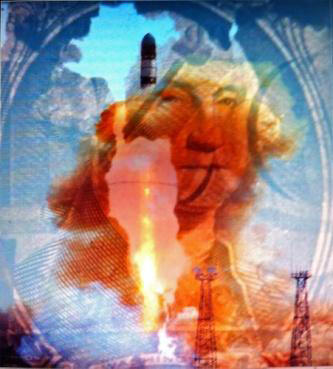
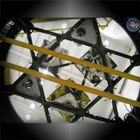
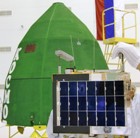
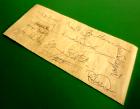
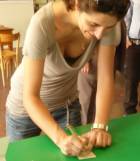
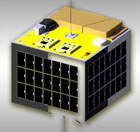
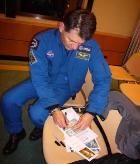


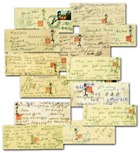
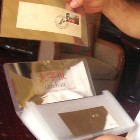
|